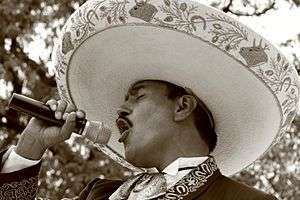Norteño (music)
| Norteño | |
|---|---|
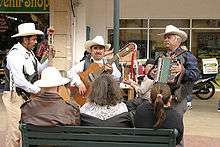 | |
| Stylistic origins |
In Mexico:
In Europe:
|
| Cultural origins | Northern Mexico |
| Typical instruments | |
| Subgenres | |
| Norteño-banda | |
| Other topics | |
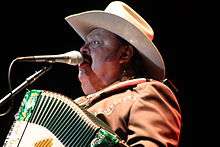
Norteño (Spanish pronunciation: [noɾˈteɲo], northern), also called música norteña, is a genre of Mexican music related to polka and corridos. As its names indicates, Norteño is a traditional musical expression from Northern Mexico. The accordion and the bajo sexto are norteño's most characteristic instruments. Norteño music developed in the late 19th century, as a mixture between German folk music (which was introduced to Mexico with the arrival of German migrant workers in those years), and local Northern Mexican music.
The genre is popular in both Mexico and the United States, especially among the Mexican and Mexican-American community, and it has become popular in many Latin American countries as far as Chile and Colombia and in Spain. Though originating from rural areas, norteño is popular in urban as well as rural areas.
Some popular norteño artists include Ramón Ayala, Intocable, Calibre 50, Los Cadetes de Linares, Los Alegres de Terán, Los Tigres del Norte, Los Huracanes del Norte, Los Rieleros del Norte, La Leyenda, and Los Tucanes de Tijuana. Local radio stations have continued to be a major influence in popularizing norteño in the Mexican-American community.
A conjunto norteño is a type of Mexican folk ensemble. It mostly includes diatonic accordion, bajo sexto, electric bass or double bass, and drums, and sometimes saxophone.
Repertoire
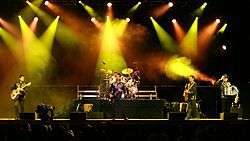
The norteño repertoire covers canción ranchera, corrido, balada, cumbia, huapango norteño, polka, redova and chotís.[1]
Examples:
Vocal:
- Ranchera polka (2
4) – "Carta Abierta" - Ranchera vals (3
4) – "Tragos amargos" - Corrido polka (2
4) – "Contrabando y traición" - Corrido vals (3
4) – "Gerardo González" - Corrido mazurka (6
8) – "Catalino y los rurales" - Bolero (4
4) - "Mi tesoro"
Instrumental:
- Huapango norteño (6
8) – "El texanito", "El Mezquitón" - Polka (2
4) – "El Circo" - Chotis (4
4) – "El Cerro de la Silla" - Redova (3
4) – "De China a Bravo"
History
Origins
Emperor Maximilian I was the first to bring the music of Middle Europe to México. By 1864 he had accumulated marching bands and musicians to entertain him. When Maximilian's empire was defeated, many of his former army and fellow countrymen fled north and dispersed into what is now the southwestern United States. Norteño music developed from a blending of Mexican and Spanish oral and musical traditions, military brass band instrumentation, and Germanic musical styles such as polka and waltz.
European immigrants from Germany, Poland, & Czech Republic to northern Mexico and the southwestern United States also brought dance traditions such as the varsovienne. The focus on the accordion in the music of their home countries was integrated into Mexican music, and the instrument is essential in the genre today. It was called norteño because it was most popular in the northern regions of Mexico.
The late 1910s and 1920s were the golden age of the corrido, a form of ballad. Mexicans on both sides of the border came to San Antonio, Texas, to record in hotels. Their songs memorialize the Mexican political revolution of the time. Los Alegres de Terán was among the first norteño bands. Later in the century the genre became more commercial with the works of Los Relámpagos del Norte and other groups. More recent bands such as Intocable integrate elements of rock music and other popular styles.
Comparison to Tejano
In the 1950s, the heavy influence of norteño on the traditional music of Mexican-Americans in southern Texas gave rise to a new form of popular music called Tejano or "Tex-Mex". It was influenced by American rock and roll and swing. Tejano music often includes English lyrics and may sound much more like American rock and country music, but is a broad genre incorporating many different styles.
Because Tejano music is derived from norteño, the two are often confused. Tejano is more influenced by American music styles such as country and jazz, while norteño is less Americanized with a rural, traditional sound.
Sierreño
A different regional Mexican genre often confused with Norteño is Sierreño. It was invented and popularized in the Mexican state of Sinaloa in the 1980’s. Its main instruments include a twelve-string guitar, acoustic guitar, and acoustic or electric bass. It can also include an accordion, but the main and most distinctive instrument in this genre is the twelve-string guitar. Unlike Norteño, Sierreño does not include drums. A tololoche can be used instead of a bass. A different style of Sierreño associated with the state of Guerrero includes a requinto instead of a twelve-string guitar.
Modernization
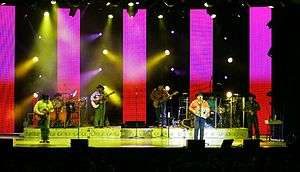
Modern norteño has also diverged significantly from more original "oldie" norteño of pre-1950s artists such as Narciso Martínez. Since the 1970s and 1980s, electric bass guitars and a modern drum set have been added.The traditional bajo sexto-accordion style of Los Alegres de Terán and Antonio Aguilar transformed into the modern style typical to that of Los Tigres del Norte, Intocable, Duelo and Los Tucanes De Tijuana. Current songs may feature percussions, saxophone, or an electronic keyboard. In 2014 Los Tigres del Norte released the album Realidades, which contains the song “Era Diferente” (meaning “She Was Different”) about a lesbian teenager who falls in love with her best friend; according to lead singer and songwriter Jorge Hernandez, this is the first time a norteño group has ever written a gay love song.[2][3]
Genres similar to norteño include banda and duranguense. These bands employ mostly brass instruments instead of accordions and guitars, but may perform the same songs. Because many of these band names contain Mexican state names or a general geographical description, such as "de la Sierra", norteño, banda, duranguense, and other similar genres can be classified into a category known as "regional Mexican music."
In recent years, some groups from the state of Sinaloa have popularized a genre called "norteño-banda". This genre is characterized by its use of a Tuba to play the bass notes, instead of an electrical bass or a tololoche. Some famous "norteño-banda" artists include Calibre 50 and Fidel Rueda, among others.
Regional styles
Norteño has many different regional styles. Norteño in Texas, for example, is likely to be influenced by American music, while artists from Nuevo Leon and Tamaulipas may have influences from the Caribbean. Jalisco and Sinaloa have also produced norteña bands, even though the two states are more closely associated with the musical styles of mariachi and banda, respectively. Chihuahua and Zacatecas norteño often combines the saxophone and the accordion. Each norteño band also has its own unique adorno, a musical interlude between lyrics. For example, the adorno of Los Rieleros del Norte is typically a descending scale.
List of notable groups
See also
References
- ↑ Instituto Nacional de Antropología e Historia (1988). Atlas cultural de México: Música. Mexico D. F.: Secretaría de Educación Pública, Instituto Nacional de Antropología e Historia : Grupo Editorial Planeta. ISBN 978-968-406-121-7.
- ↑ "Realidades - Los Tigres del Norte | Releases". AllMusic. 2014-10-07. Retrieved 2015-03-25.
- ↑ Yezmin Villarreal (2015-03-21). "Los Tigres del Norte Are Making Gay Norteño History". Advocate.com. Retrieved 2015-03-25.
